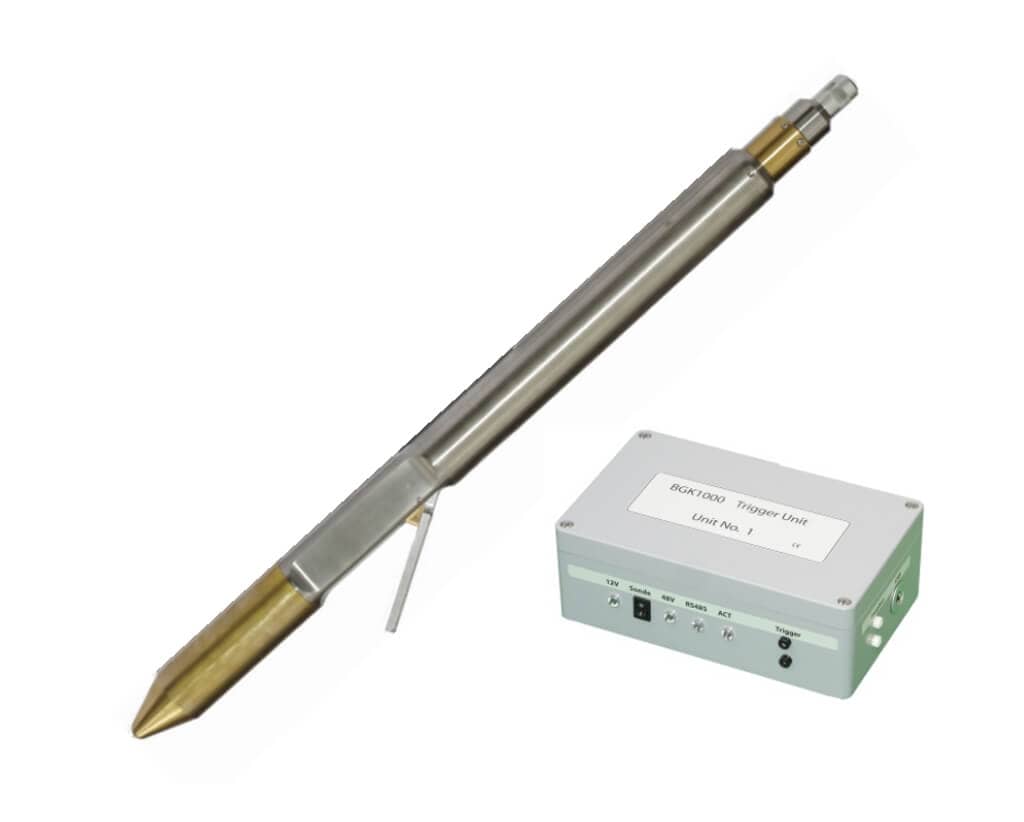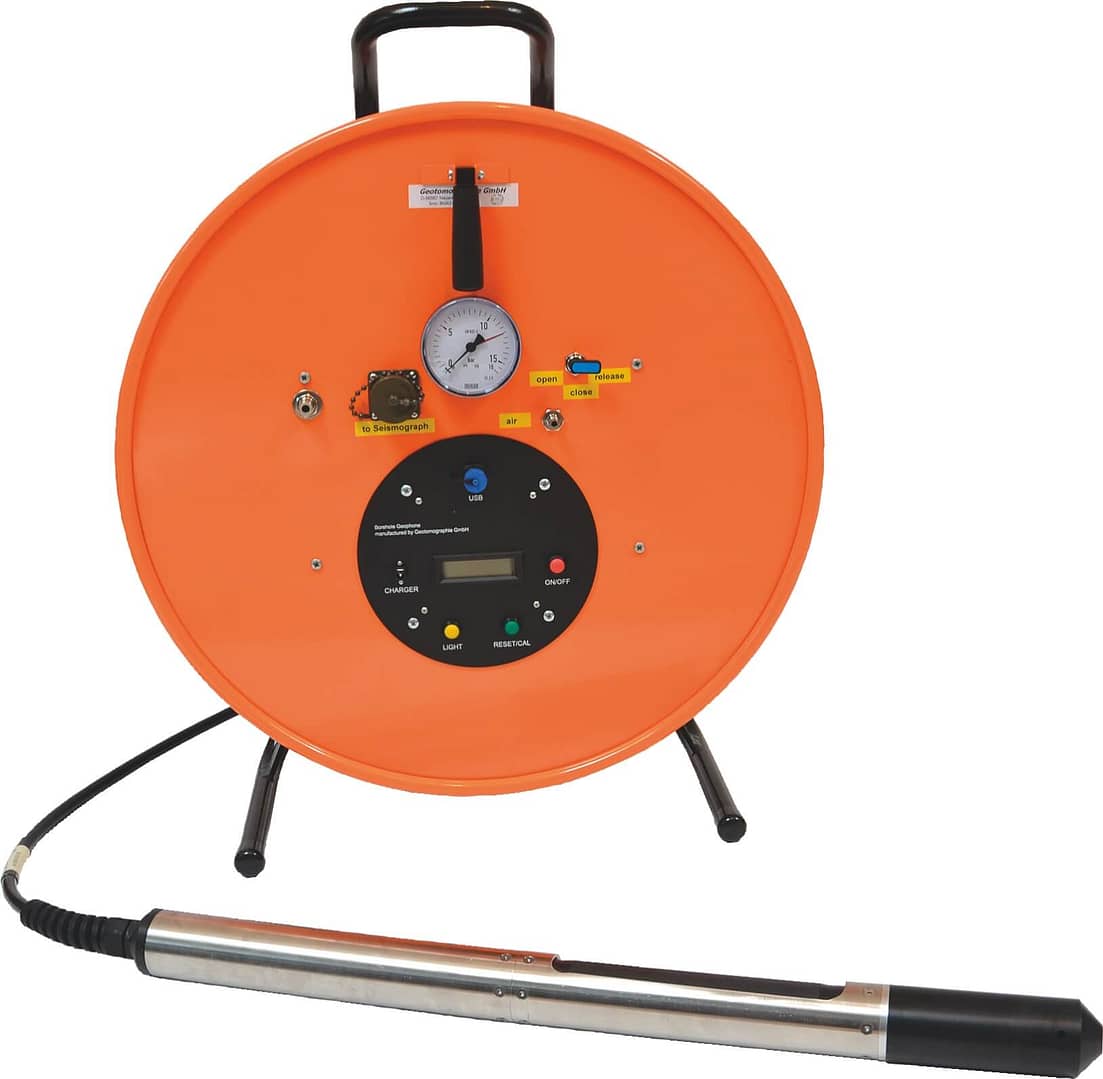
BGK1000 Borehole Geophone
The BGK1000 is a digital borehole geophone used to receive P- and S-waves in dry and water filled boreholes. It is manufactured by Hinz Messtechnik GmbH and exclusively distributed by Geotomographie. The borehole geophone BGK1000 consists of a downhole probe with a tri-axial geophone sensor and a surface communication unit connected to the USB port of a laptop. Optionally, a hydrophone sensor can be added. An auxiliary channel can be connected to the surface unit to record an external seismic signal, i.e. a pilot vibrator sweep. Triggering is made via the surface unit allowing TTL pulse, geophone or contact triggering. The borehole geophone is designed to run on a winch equipped with a 4-conductor cable and a Gearhart Owen cable head. The geophone is coupled to the borehole wall by a mechanical clamping system (motor-driven arm). A magnetic compass is used to get the sensor orientation in the borehole. Seismic data are stored in SEG2 format by the acquisition software. A seismograph is not required.















